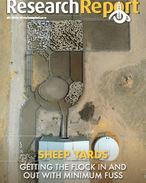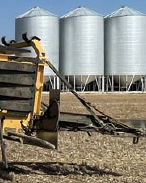This article is 7 years old. Images might not display.
The Plant Biosecurity CRC’s Pestpoint tool has won a 2017 Award for Excellence in Innovation at Collaborate Innovate 2017 – the Cooperative Research Centres Association annual conference.
While rapid and remote identification of plant pests and diseases is a key function of the system, Pestpoint is more than just that.
People using Pestpoint create their own private group and use their smartphone or mobile device to collect and record signs of crop pests within the Pestpoint app. They can share images or video so fellow members or taxonomic experts can assist with identification. Pestpoint documents this process and saves pest records in a searchable database that can be exported as reports.
“It’s a low cost, low-tech resource that empowers farmers to act quickly to get on top of the problem, no matter where they are in the world,” said Dr Gary Kong, plant pathologist and project leader.
“Importantly, it also provides a secure web space so online communities can create a private network where members can identify crop pests and diseases at a level of privacy and security that suits their requirements,” he said. “All pest data is owned and managed by the group.”
Distance, and a shortage of experts, means many farmers in remote areas or developing countries find it difficult to quickly identify plant pests and diseases.
“People using mobile devices and inexpensive digital microscopes can use Pestpoint to draw on the collective expertise of local, regional, national or international networks to provide a much faster pest identification, enabling immediate steps to be taken to reduce the impact.
“Time is of the essence when you’re looking at possible crop damage or, worse still, a potentially serious pest invasion.”
Dr Kong told Farming Ahead that Pestpoint will also help expand the knowledge of crop pests for Australian growers.
"One of the key advantages of Pestpoint for Australia is the way pest records build into a searchable database over time that can be used to produce confidential customised reports and maps of pest distribution covering whole regions,” he explains.
“From this we can visualise patterns that will help us combat pests on a national scale."
Pestpoint is now in pre-commercial use in Australia, Myanmar, Cambodia, Thailand, Laos PDR and Indonesia, and will soon be implemented in the Pacific, including New Zealand, Fiji, Tonga, Samoa, Vanuatu and the Solomon Islands.
The project has been funded by the Plant Biosecurity CRC.






















